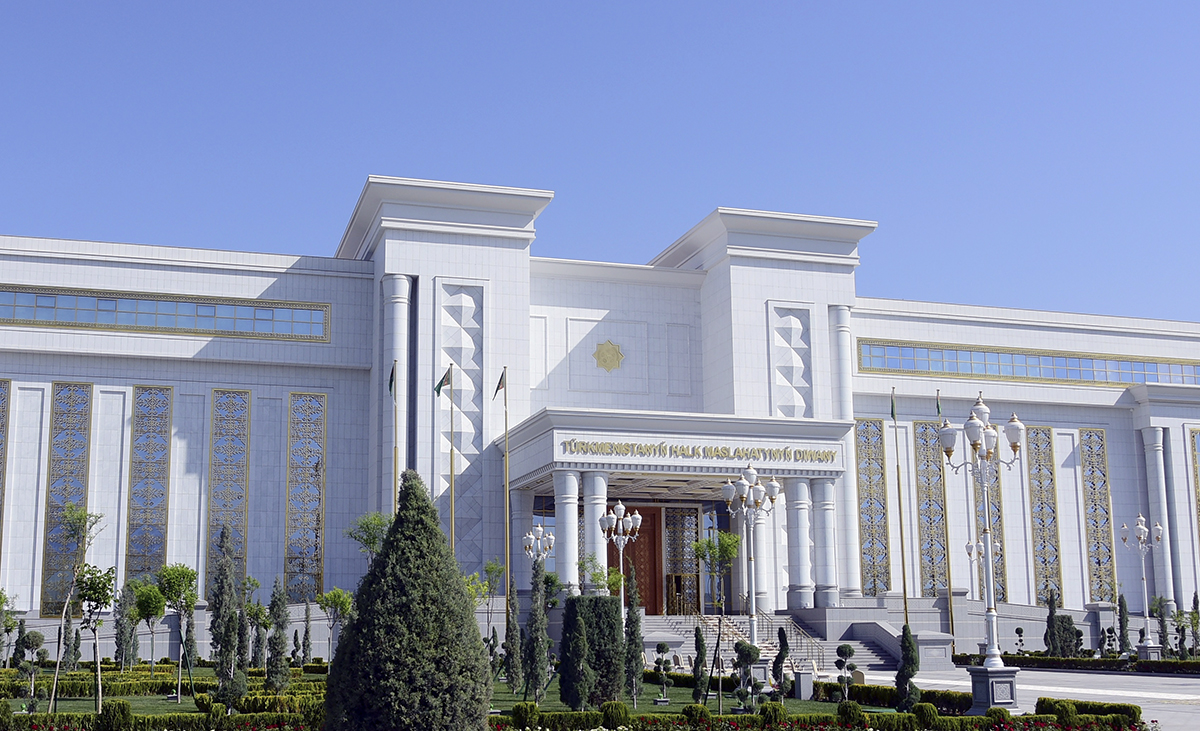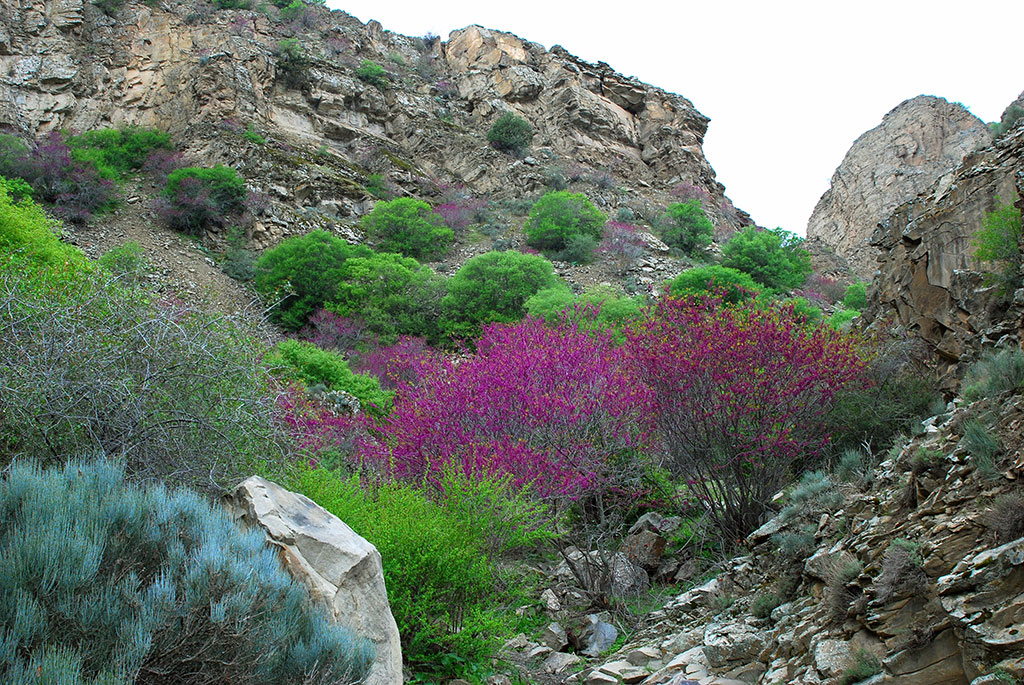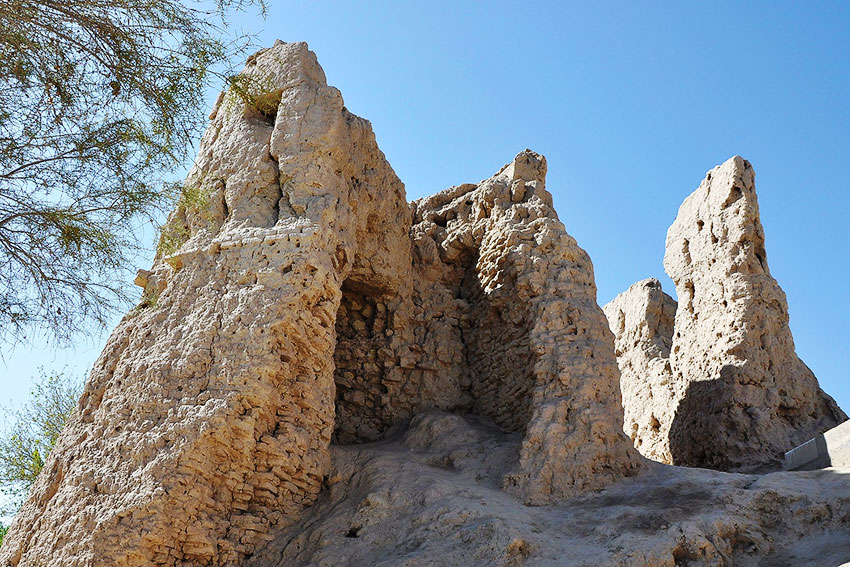The Ayri-Baba Mountain is the highest peak of the Koytendag Mountains, a highest branch of the Gissar Mountain Ridge that edges the south-eastern border of Turkmenistan and all mountain systems of the country as well. Its height is 3,139 meters above the sea level.
Ayri-Baba amazes pilgrims and alpinists with its unusual beauty and wonderful landscapes. It is especially beautiful in winter, when the mountain top is covered with snow of several meters in depth. Only Zarafshan juniper resists this snowy kingdom. This strong, high and branchy conifer acquires fanciful forms because of strong winds.

The plant and animal kingdom in Koytendag is rich and diverse, many rare and endemic plant species have remained there. Often, in February, bright crocuses and pyralids blossom on the top of the mountains. Markhor, moufflon, lynx - animals included in the Red Book of Turkmenistan inhabit on the slopes of the mountain in juniper forests. 122 species of birds are found in Koytendag. In general, the biodiversity in Koytendag is represented by 1,171 species, of them - 988 species of plants and 183 species of animals. To preserve the natural environment of this unique region, the Koytendag State Reserve was established in 1986.
There are many sacred places, including national reserves covered with beautiful ancient legends in Koytendag. Probably, the greatness of the mountains, and their inaccessibility attract people, and, partly, is the cause of the special, reverent attitude to them. For example, the name of the top - Ayri-Baba is translated from the Turkmen language as ‘divided holy mountain’ (Ayri in Turkmen means separately, Baba means a holy man or grandfather). The people residing in the foothills of Koytendag Mountains have an ancient legend about the origin of the name. According to the legend, during the Flood, Noah had to stop his Ark on top of Ayri-Baba. The mountain was very proud of it and constantly bragged about its greatness. The God found out about it and decided to punish the arrogant mountain. The God cancelled the scheduled stop. The Ark rammed the mountain pulling down the top of the mountain into two parts. The mountain became two-headed, and the cavity between them still resembles the trace of the Ark.

According to another legend, a holy man who did much to spread the religion of Islam, ascended to the heaven from the mountain peak. His followers laid out a tomb from stones on a rock. This tomb respected by the faithful is located at the edge of a precipice. Only a narrow path separates it from the steep of over 500 meters in depth. By tradition, a pilgrim climbing to the top of the mountain should walk around this grave, because if he is guilty of something, then there is a chance to fall into the precipice. Fortunately, local people do not remember such cases although every year about fifty people make the ascent to the holy place.

Pilgrims make small hills from stones around the grave on the top of the mountain. Thus, the top of the mountain is covered with these miniature imitations of the Saint’s tomb that, according to the popular belief, promote to a long and happy life.
There is a grotto on the top of the mountain, on the north side of the rock. According to a legend, Caliph Ali, who preached Islam in these regions, lived there. The dome-shaped grotto has a quite natural origin, but for some reasons, the local people believe that it was Caliph Ali who hollowed it out in the rocks. And nowadays, pilgrims pray in this grotto calling it ‘a mosque of Ayri-Baba’.

Today, Ayri-Baba attracts many alpinists. Of course, only those alpinists who have trained much and have got enough experience and supplied with necessary equipment can climb to climb up to the mountain. By tradition, every year, for more than 15 years, the alpinists of the Agama Club in Ashgabat make an ascent to the highest peak of Turkmenistan to set up the green Turkmen flag on the mountain in honor of a holiday.
Ayri-Baba amazes pilgrims and alpinists with its unusual beauty and wonderful landscapes. It is especially beautiful in winter, when the mountain top is covered with snow of several meters in depth. Only Zarafshan juniper resists this snowy kingdom. This strong, high and branchy conifer acquires fanciful forms because of strong winds.

The plant and animal kingdom in Koytendag is rich and diverse, many rare and endemic plant species have remained there. Often, in February, bright crocuses and pyralids blossom on the top of the mountains. Markhor, moufflon, lynx - animals included in the Red Book of Turkmenistan inhabit on the slopes of the mountain in juniper forests. 122 species of birds are found in Koytendag. In general, the biodiversity in Koytendag is represented by 1,171 species, of them - 988 species of plants and 183 species of animals. To preserve the natural environment of this unique region, the Koytendag State Reserve was established in 1986.
There are many sacred places, including national reserves covered with beautiful ancient legends in Koytendag. Probably, the greatness of the mountains, and their inaccessibility attract people, and, partly, is the cause of the special, reverent attitude to them. For example, the name of the top - Ayri-Baba is translated from the Turkmen language as ‘divided holy mountain’ (Ayri in Turkmen means separately, Baba means a holy man or grandfather). The people residing in the foothills of Koytendag Mountains have an ancient legend about the origin of the name. According to the legend, during the Flood, Noah had to stop his Ark on top of Ayri-Baba. The mountain was very proud of it and constantly bragged about its greatness. The God found out about it and decided to punish the arrogant mountain. The God cancelled the scheduled stop. The Ark rammed the mountain pulling down the top of the mountain into two parts. The mountain became two-headed, and the cavity between them still resembles the trace of the Ark.

According to another legend, a holy man who did much to spread the religion of Islam, ascended to the heaven from the mountain peak. His followers laid out a tomb from stones on a rock. This tomb respected by the faithful is located at the edge of a precipice. Only a narrow path separates it from the steep of over 500 meters in depth. By tradition, a pilgrim climbing to the top of the mountain should walk around this grave, because if he is guilty of something, then there is a chance to fall into the precipice. Fortunately, local people do not remember such cases although every year about fifty people make the ascent to the holy place.

Pilgrims make small hills from stones around the grave on the top of the mountain. Thus, the top of the mountain is covered with these miniature imitations of the Saint’s tomb that, according to the popular belief, promote to a long and happy life.
There is a grotto on the top of the mountain, on the north side of the rock. According to a legend, Caliph Ali, who preached Islam in these regions, lived there. The dome-shaped grotto has a quite natural origin, but for some reasons, the local people believe that it was Caliph Ali who hollowed it out in the rocks. And nowadays, pilgrims pray in this grotto calling it ‘a mosque of Ayri-Baba’.

Today, Ayri-Baba attracts many alpinists. Of course, only those alpinists who have trained much and have got enough experience and supplied with necessary equipment can climb to climb up to the mountain. By tradition, every year, for more than 15 years, the alpinists of the Agama Club in Ashgabat make an ascent to the highest peak of Turkmenistan to set up the green Turkmen flag on the mountain in honor of a holiday.






